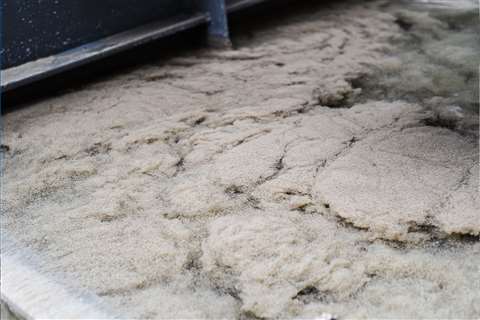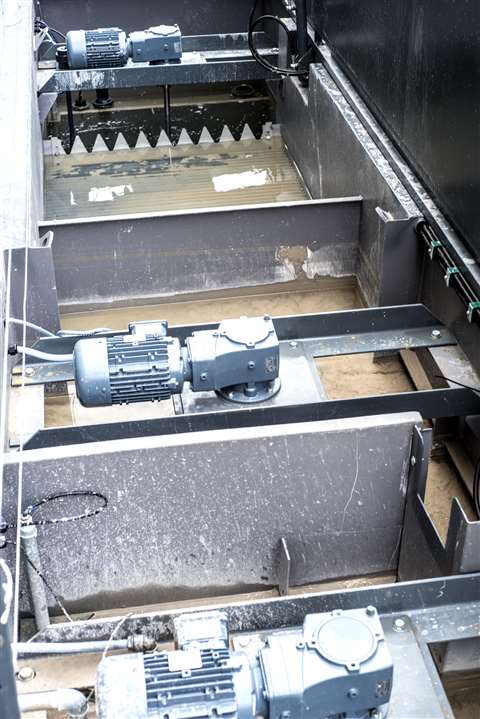Waste not, want not
15 April 2020
The stakes have never been higher for US construction contractors. Demand is expected to grow 85% by 2030. The Associated Builders & Contractors reported that construction backlog hit a historical high of 9.9 months in mid-2018, with bridges particularly desperate for renovation.

Robotic hydrodemolition is one method growing in popularity, addressing the need for fast, safe and efficient concrete removal during infrastructure projects.
But with it comes the obvious question: “What do you do with the wastewater?”
Hydrodemolition robots use high-pressure water jets up to 40,000 psi to remove damaged or deteriorated concrete from virtually any structure in need of repair.
This efficiency, however, brings its own responsibility. Wastewater created during hydrodemolition as an increased pH level and high turbidity — cloudiness or haziness caused by the presence of a lot of debris particles. The wastewater must be captured and treated before being released into the environment or reused by a robot.
The method of capture depends on the project, but typically involves damming up and guiding the water to a holding area where it can be collected and treated. Crews completing a recent car park renovation constructed barricades to contain water and debris as the robot removed concrete. The water was routed across each level of the car park and through a series of filters, allowing gravity to assist with particle removal by the time the water reached ground level.
Another contractor working on a Department of Transportation bridge renovation dammed up the storm collection box on the downhill end of the bridge, as well as any other areas water could escape. Vacuum trucks then sucked the water from the collection area, as well as any standing water in the work area. The entire process, from collection to treatment, was carefully monitored by state officials.
Water treatment systems are manufactured with a variety of features and differ in their treatment methods. Each uniquely affects the safety, efficiency and, ultimately, the profitability of a contractor’s operation.
There are a handful of different substances that can be used to reduce water pH. While the most effective is carbon dioxide, most aftermarket water treatment systems use mineral acid.
Dangers and inefficiencies
There are some dangers and inefficiencies that come with using acid for pH reduction. One of the biggest downsides is that mineral acid is dangerous to handle. Workers must have special training and wear special personal protective equipment (PPE) to work with the acid. Precision and control are also greatly reduced when using acid to reduce pH. It is easy for operators to accidentally take the treatment too far and acidify the water. This fact alone results in a necessarily slow and costly process.

Some advanced water treatment systems use carbon dioxide rather than acid to neutralise water pH.
With carbon dioxide it is virtually impossible to acidify the water. Plus, unlike methods requiring acid, carbon dioxide does not leave any hazardous by-products.
Treatment with carbon dioxide is also a fraction of the cost of acids commonly used for pH reduction. Treating with hydrochloric or sulphuric acid costs around four times as much as carbon dioxide. Citric acid is nearly eight times more expensive.
In short, a system that treats pH with carbon dioxide instead of acid is much easier and far less expensive to operate.
Advanced water treatment systems will often offer features that can give contractors the edge they need to win a competitive bid. Some sophisticated systems provide detailed daily reports that offer insight to the cleanliness of the discharged water, including pH levels and the amount of water that was treated.
Depending on the unit, these reports may be printed and shared with stakeholders to verify treatment.
This documentation provides proof of compliance to environmental regulations and builds trust with the project owner.
Some systems take the technology a step further with online monitoring and control systems. Operators can view data in real time, and even control the entire system from the online command centre.
This provides contractors even more control, flexibility and precision while solidifying their peace of mind that the water they release is harmless to the environment.
- First published in the March 2020 issue of Demolition & Recycling International. Thanks to Keith Armishaw, business development manager of Aquajet’s North American subsidiary, for the article
